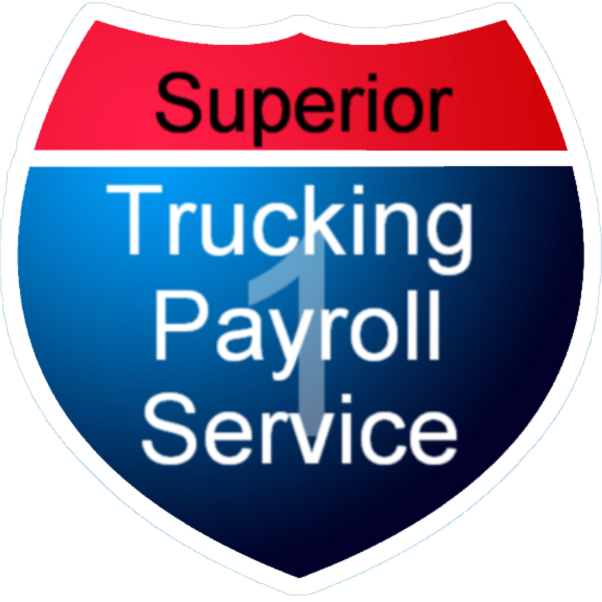If you’ve ever bounced over a deep pothole in early spring, you know how rough the roads can get. But if you’re in the trucking world, it’s not just an annoying bump—it’s a costly problem. Bad roads mean more wear on your truck, more breakdowns, and more downtime.
That road damage? It doesn’t just appear out of nowhere. It’s caused by the freeze-and-thaw cycle that happens in late winter and early spring. As the ground thaws, roads become soft and unstable underneath—making them more likely to break apart under heavy weight.
That’s where seasonal weight restrictions come in. These rules are put in place to protect those weakened roads and reduce damage from heavy trucks. They might feel like a hassle, but they help keep roads safer—and can actually save you money on fines, delays, and repairs.
In this article, we’ll break down what seasonal weight restrictions are, why they are important, and how it affects the trucking industry.

What Are Seasonal Weight Restrictions?
Seasonal weight restrictions are temporary limits placed on certain roads, usually in late winter or early spring. They’re designed to protect the roads when they’re at their weakest point—right after the ground thaws.
Here’s what happens:
When the ground under a road is frozen, it’s solid. But as temperatures rise and snow starts to melt, that frozen layer turns into waterlogged soil. Roads built over that soft ground can’t support the same heavy loads they normally do. Even standard legal truck weights can crack pavement or cause it to sink.
To prevent major damage (and costly repairs), local counties or state DOTs post seasonal weight limits. These can include:
- Lower axle weights
- Speed limits for heavy vehicles
- Route restrictions
- Permit requirements for overweight loads

Where Do These Restrictions Happen?
Seasonal weight limits are most common in northern states and colder regions—places that experience long freezes and sudden thaws. You’ll often see them in:
- Midwestern states like Michigan, Minnesota, and Wisconsin
- Northeastern states like New York and Maine
- Mountain areas where elevation brings heavy snow and deep freezes
- Rural counties where roads aren’t built to the same strength as major highways
If you drive routes in these areas, it’s important to pay attention to county road commission websites, DOT maps, and posted signs, especially in early spring.
Why Do Seasonal Weight Restrictions Matter?
It’s About Saving Roads—and Money
Roads aren’t cheap to build or repair. A single mile of asphalt can cost hundreds of thousands of dollars. When trucks drive over soft roads, they can cause deep cracks and crumbling shoulders—damage that spreads fast. Seasonal limits help prevent that.
By reducing how much weight a truck can carry and how fast it can drive, officials try to limit road damage during this vulnerable time. It’s not just about saving tax dollars—it’s about keeping roads safe for everyone, including truckers.
How Do These Rules Affect Trucking?
Seasonal weight restrictions don’t just impact the roads—they change how trucking companies plan, load, and drive during the spring months.
Short-Term Pain, Long-Term Gain
If you’re a fleet manager, dispatcher, or owner-operator, you’ve likely run into issues like:
- Rerouted loads
- Longer drive times
- Load splits
- Permit delays
These restrictions can feel like a roadblock to your schedule—but they’re not going away. Instead, the key is to understand how they work and plan around them.
Not All Roads Are Treated the Same
Most states split roads into categories like:
- All-Season Roads: Built to handle full loads year-round. No restrictions.
- Seasonal Roads: Weaker roads that are more likely to get damaged. These get the restrictions.
You can often find these marked on your state’s truck operator’s map, or through tools from your DOT or road commission.
While these rules may seem like an inconvenience, ignoring them can lead to serious problems—ones that hit your wallet, your schedule, and your safety record.
Why Ignoring Seasonal Limits Can Cost You
Skipping seasonal weight rules might seem like a way to save time—but it can end up costing you a lot more in the long run.
If you drive an overloaded truck on a restricted road, you could face:
- Hefty fines, sometimes in the thousands
- Damage to your truck, especially to tires, suspension, or axles
- DOT violations that affect your safety score and record
- Delivery delays if you're pulled over or forced to reroute
- Increased wear on your equipment, leading to more frequent repairs
Even if a road seems fine or “you’ve run it before,” thaw season is unpredictable—and so is enforcement. Officers from local agencies, state police, or the DOT may be out checking for compliance.
In short, following the restrictions might slow you down a little—but ignoring them can stop you completely.

How to Stay Compliant (and On the Road)
Here’s what you can do to avoid headaches during seasonal restriction periods:
- Check your route: Use state DOT maps or apps to see if a road is seasonal.
- Watch weight and speed: You may need to reduce axle weight or slow down.
- Get permits: If you must haul a heavy load, see if you qualify for a temporary permit.
- Communicate with dispatch: Make sure everyone on your team is aware of affected routes.
Planning ahead is the best way to keep rolling while staying legal.
Final Thoughts: Protect Your Rig—and Your Bottom Line
Seasonal weight restrictions exist for a good reason: to protect roads when they’re at their weakest. By understanding how these rules work and planning ahead, you can avoid costly breakdowns, reroutes, and fines.
You already deal with enough challenges in trucking—tight schedules, rising costs, and vehicle maintenance. The last thing you need is an unexpected fine or repair bill for ignoring a seasonal road limit.
Make it part of your routine to check road maps, load weights, and permit requirements in colder months. Staying ahead of the rules keeps you moving and keeps your trucks in top shape.
And if you’re looking for help with payroll—so you have one less thing to manage—Superior Trucking Payroll Service is here for you. We handle payroll the way trucking companies need it: fast, accurate, and built around your schedule. Whether you’re an owner-operator or running a full fleet, we make payday simple so you can focus on the road ahead.
Written by Melisa Bush
With over 15 years of experience in the trucking industry, Melisa is well-versed in the complexities of trucking payroll and adept at navigating special circumstances. Before joining Superior Trucking Payroll Service, Melisa worked at a trucking company, where she managed driver miles and expenses for a fleet of 50 trucks. This hands-on experience gives her unique insight into the challenges our clients face when preparing their payroll data.
Melisa’s top priority is customer service. She strives to treat each client as an individual with genuine needs, rather than just another number in the system. Her goal is to alleviate the burdens of our clients and make their daily operations smoother.

